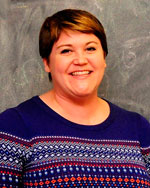Heather Kindschy, award-winning Media Specialist, CLCD friend and former newsletter editor – at the LC Summer Teaching Institute.

Heather Kindschy is a beacon in the world of education. Former Georgia Media Specialist of the Year, Metro Atlanta Media Specialist of the Year, and Media Specialist of the Year in the Cobb County School District, Kindschy keeps her eye on the latest trends and pedagogy in education and libraries. So, it was no surprise to anyone that this forward-thinking educator would be chosen to participate in this summer’s Library of Congress Teaching with Primary Sources Summer Teacher Institute, held from July 10-14. The week focused on pedagogy that will build students’ critical thinking skills, keeping the students engaged, all while using primary resources from the Library of Congress collection. Kindschy decided to focus her primary source activity on WWI as it is a 5th grade standard and plans to apply what she learned from the Library of Congress educators into a lesson with her students at Mount Bethel Elementary School in Marietta, GA this fall.
CLCD was honored to get a chance to speak with Kindschy about her interest in the Institute and learn how she plans to apply her experience to educational plans this fall.
Heather, what made you want to apply for the Institute?
My county level supervisor, Holly Frilot, sent out an email to all media specialists telling us how great her experience was last summer, and after browsing the link she sent, http://www.LOC.gov/teachers/professionaldevelopment/teacherinstitute/, I knew that the professional development would be an incredible experience. I also wanted to revive some social studies lessons that had become tired for me and classroom teachers to teach. In the upper elementary grades, there are an incredible number of standards to cover, so I think that history becomes a chore to teach and learn. I knew that primary source activities would breathe new life into these lessons.
Tell us a little about your time at the Institute.
The institute was a week long and ran from 9-5 each day. Our days were jam-packed with primary source activities that we could take back and use with our students. We were engaged and immersed in the digital primary sources the Library of Congress has to offer. In the end, we walked away with a primary source activity based on our standards to use with our students sometime in the first quarter back at school. In addition to the Institute trainers, we also met and interacted with LC librarians and staff, and each other. We even had the opportunity to meet THE Librarian of Congress, Carla Hayden, who is a fierce advocate of teachers and school librarians.
Your week of studies consisted of using the Library of Congress’s resources. What resource did you find the most fascinating?
The week was spent exploring many aspects of the Library of Congress’ digital primary source collection such as content, navigation, primary source sets, and classroom materials. We looked at resources from many different time periods. Our first activity on day 1 was to look at primary sources displayed around the room. After we explored some of the primary sources on the tables, we were asked to choose one that spoke to us. I chose the first one I had walked up to. It was a naval dispatch from the ranking naval officer in Pearl Harbor. It simply said, “AIR RAID ON PEARL HARBOR X THIS IS NOT DRILL.” I remember immediately getting chills imagining the receiver of that message. Primary sources really can make history come alive! Link to the source from the LC This Day in History: https://www.LC.gov/item/today-in-history/december-07
How do you plan to implement what you learned at the Institute in the upcoming academic year?
I have already put the bug in 5th grade teachers’ ears about the primary source activity I developed for them, and I plan to sit in on early grade-level planning meetings showing them primary source activities that I enjoyed. We can unpack Social Studies standards together and find meaningful ways to integrate primary sources into their lessons. I will also meet with 4th and 5th grade teachers to discuss how primary sources can enhance existing lessons and unit plans.
What was your biggest take-away from your week at the Library of Congress?
Primary sources are vital in teaching students the inquiry method of learning. Elementary students especially are still naturally curious about the world around them, and using primary sources in conjunction with their social studies textbooks will increase engagement and understanding of history. It will encourage our students to ask questions and gain a deeper understanding of our past.



